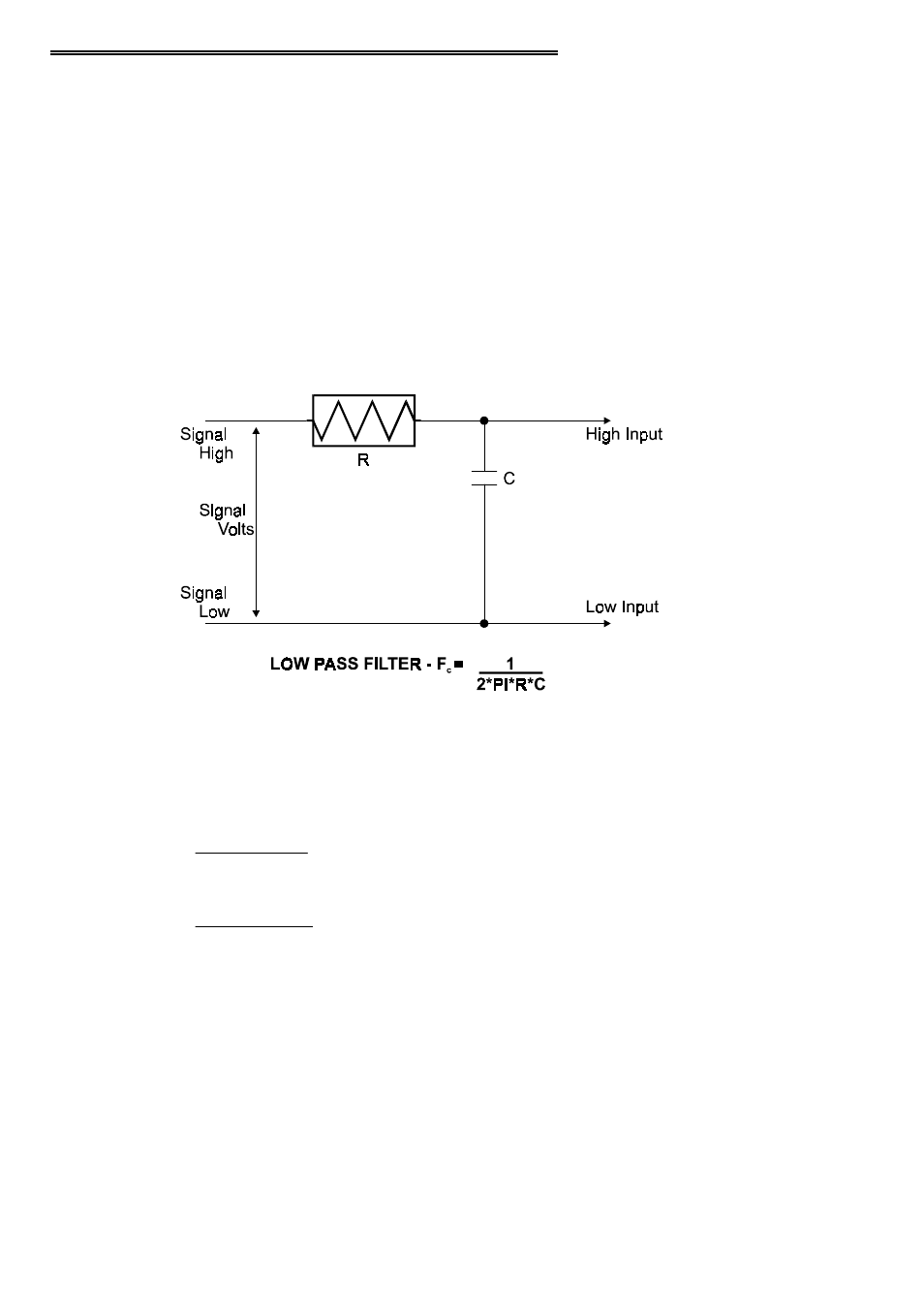2 low-pass filters de-bounce inputs – Measurement Computing PC104-CTR10HD User Manual
Page 16

5.2 LOW-PASS FILTERS DE-BOUNCE INPUTS
A low-pass filter is placed on the signal wires between a signal and an A/D board. It
stops frequencies greater than the cut-off frequency from entering the board's inputs.
The key term in a low-pass filter circuit is cut-off frequency. The cut-off frequency is
that frequency above which no variation of voltage with respect to time may enter the
circuit. For example, if a low-pass filter had a cut-off frequency of 30 Hz, the kind of
interference associated with line voltage (60 Hz) would be filtered out but a signal of
25 Hz would be allowed to pass.
In a digital circuit, a low-pass filter can be used to filter an input from a switch or
relay. See Figure 4-2 for the circuit configuration
Figure 4-2. Low-Pass Filter
A simple low-pass filter can be made from one resistor (R) and one capacitor (C).
The cut off frequency is determined according to the formula:
Fc =
1
2 *
π
* R * C
R =
1
2*
π
* C * Fc
Where
π
= 3.14...
Fc = frequency in cycles per second
R = resistance in Ohms
C = capacitance in Farads
12
